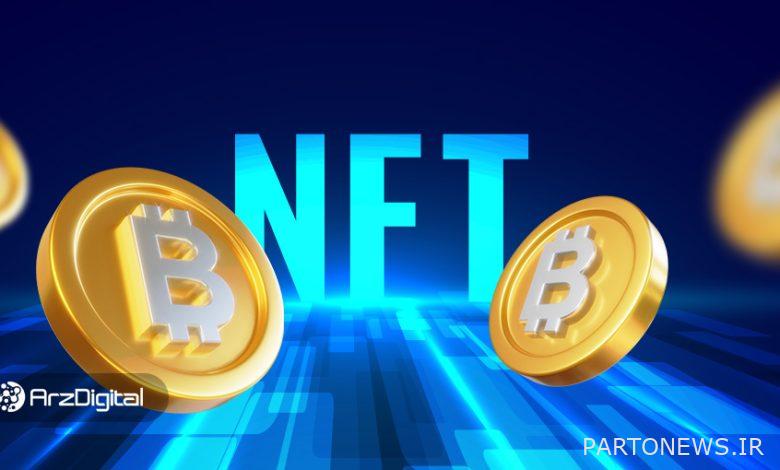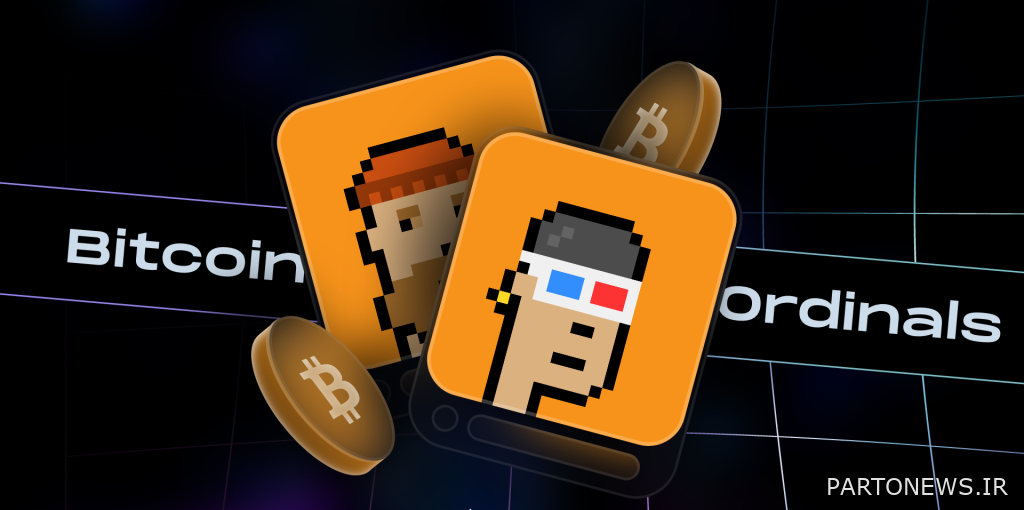Are Ordinals a valuable event for the Bitcoin network?

Non-Featured Tokens (NFTs) have become a hot topic in the cryptocurrency market today, and the past few years have seen a surge in interest in blockchain collectibles.
The supply and operation of non-monogamous tokens requires the support of smart contracts in a blockchain; A feature that the Bitcoin blockchain did not benefit from, and for this reason, most of the tokens and NFT projects are now released on the Ethereum blockchain.
But on January 2, 2023 (1 Behan 1401), a software engineer named Casey Rodermore announced the launch of the Ordinals protocol. This protocol enables the creation of NFTs in the mainnet of the Bitcoin network, and it seems that we can see the supply and activity of these tokens in the Bitcoin blockchain from now on.
The Ordinals protocol has managed to use the latest updates and upgrades made in the Bitcoin blockchain to enable this network to support these non-monogamous tokens, and this process is made possible by engraving and adding information (Inscriptions) on satoshis. has been
However, the addition of NFT to Bitcoin has its margins and has led to some concerns and discussions among blockchain and Bitcoin enthusiasts and activists.
A topic that has also caught the attention of Olga Ukolova, board member of the LNP/BP non-profit association. In the rest of this article, you can translate content Read his publication in Bitcoin Magazine with a few edits and changes.
People’s interest in collections and the reason for their value
If you read the Ordinals tutorials, objectives, and documentation, you’ll find that there’s a fairly simple idea behind this concept, similar to the idea and purpose of collecting ancient coins and currencies.
Collector coins enthusiasts keep them for various purposes including beauty, entertainment, for personal collection or for the purpose of saving for future generations and selling at a higher price.
If we add to these coins the unusual nature and engraving of information, they can gain a lot of value; Because these coins are usually produced in very small numbers.
For example, the American Double Eagle coins minted in 1993 are now valued at around $18.9 million, making them one of the most valuable collectibles in the world.
The idea of minting such a coin was first proposed by Theodore Roosevelt, the 26th President of the United States, and provided a unique opportunity for the well-known artist and sculptor of that time, Augustus Saint-Gaudens.
However, these attractive coins did not last long, and in 1993, President Franklin Delano Roosevelt removed the gold standard.
Following this change, 445,000 double eagle gold coins were declared illegal and the Roosevelt administration ordered all of them to be collected and melted down.
Despite America’s efforts to collect all the coins, in the end a very limited number of them disappeared and were seen in the corners of the world in the following years; Coins that are now very valuable due to their rarity and history.
This can also happen in the digital currency market, and the unique coins produced and stored in blockchains can become valuable in a short period of time or in a long-term period of several years.
Therefore, the purpose of activity and importance of Ordinals for Bitcoin is understandable; Because today’s NFT collections can be valuable future collections and bring great wealth to their owners.
Bitcoin; An alternative to gold coins
There have been many occurrences of double eagle coins throughout history, and people have always been interested in collecting beautiful, expensive, and rare things.
Stones, shells, gold, minerals, animals and even clothes are among these items that have attracted people’s attention due to their characteristics and their value has increased.
Today, this trend seems to have reached non-coins such as blockchain tokens, and these digital coins and artworks have become valuable; A feature added to the Bitcoin blockchain with Ordinals and some of its benefits are listed below.

Ordinals is an attractive option for people who like Bitcoin as a collectible or cannot afford to buy a large amount of it.
- Ordinals allows people to have unique satoshis and own some of them.
- For collectors (especially coin enthusiasts) Ordinals offers a digital way to own, store and transfer the coins they find valuable.
- Ordinals also work towards store of value, one of the key features and goals of Bitcoin, and if you have a unique satoshi, you can preserve it for generations to come.
The importance of privacy for collectors
Despite various advantages, Ordinals is not a perfect protocol and some disadvantages and problems can be seen in it.
In the physical world, valuable collections are usually kept quietly and out of the public eye. Imagine a situation where you have a precious 22 carat black diamond in your home. In such a situation, you probably prefer that your neighbors, whom you do not know, do not notice this valuable asset and collection of yours.
Therefore, one of the important points regarding the maintenance of rare and expensive assets is the preservation of privacy and anonymity.
Bitcoin is a decentralized digital currency that protects your identity; But your activity and transactions are not hidden and are recorded in the blockchain. This means that anyone with an address can view your transaction history and digital balances.
Ordinals also operates in the same way; So it can’t hide your balance and it doesn’t offer you a way to keep your privacy.
Also, considering that Ordinals operates in the Bitcoin blockchain, the activity of this protocol affects this network and creates complexity and various technical problems for many network operators and miners.
Bitcoin is not a scalable digital currency and was not intended to be used as a file storage system at the time of its creation; A process that can increase Bitcoin transactions and associated fees.
The activity of Ordinals can lead to an increase in the processing load of the network and eventually we will see a situation similar to the Ethereum network, whose high fees are always considered.
It’s natural that no one wants to pay hefty fees for their everyday Bitcoin payments, and cryptocurrency enthusiasts would prefer that not change.
Bitcoin network miners may also prefer to use their energy and expensive devices for more important activities such as verifying financial transactions, rather than processing and verifying a few worthless JPEG images over satoshis; An issue that can delay the process of processing and verifying Bitcoin NFTs.
As much as Ordinals tries to be optimal and not increase the processing load of the network, considering the current perspective of Bitcoin development, there are some concerns and we see the repetition of the same discussions and conversations in 2017 in the space of the Bitcoin ecosystem; The year when problems arose in the Bitcoin ecosystem with the increase in block size and the fork of the blockchain.
Read more: What is the block size of Bitcoin and what is its importance? A brief history
With the addition of NFTs and collectible tokens to Bitcoin, it is expected that new challenges will be created for the block size, and we are once again witnessing debate and disagreement about the block and the capabilities of the Bitcoin network.
It is also necessary to know that simply engraving information such as an MP3 or JPEG file on a satoshi cannot make this satoshi unique or bring more value to it. As seen in the NFT market, a variety of factors influence the value of a satoshi or NFT token.
Discussions surrounding the problems and challenges of Ordinals and collectible coins have been raging on Bitcoin forums and community groups for the past few weeks. The Ordinals protocol has its supporters and opponents, and each group is trying to convince the other that the operation of this protocol will ultimately benefit or harm Bitcoin.
What kind of NFT and protocol can benefit Bitcoin?
Throughout history, humans have always been interested in creating, owning, and exchanging valuable art collections, and now this interest has also reached blockchain; But Ordinals and many other existing solutions, along with their advantages, also bring many problems to the digital currency network.
But if Ordinals are not suitable for Bitcoin, what kind of NFT can be useful and practical for Bitcoin blockchain? To better understand this, imagine a perfect NFT and blockchain collection. This token must have various features, including the following:
- has an owner; It is always the first owner and owner of a collection and token creator who has the right to change, add information, sell, rent and other things related to it.
- The right of ownership of this collection must be such that it can be transferred to the new owner in a peer-to-peer manner and by eliminating intermediaries; A transfer that is done in full and cannot be resold by the previous owner.
- The uniqueness and value of the property must be verified at any time.
By default, ownership and information about assets should be private, giving owners the option to make this information public if needed.
Experience has shown that many artists do not react well to criticism and cannot accept it. Publicity of information by default can help a wave of attacks against these artists and bring consequences.
In addition, if you have an expensive painting, stone or metal in your possession, it’s natural that you don’t want the whole world to know about it; Because it increases the possibility of theft and other big problems in the physical and digital world.
Many collectors also prefer to keep their possessions under wraps in order to display and sell them when the right opportunity presents itself and its value is at its highest.
These collections should not operate on the Bitcoin blockchain and should not bring any additional burden and changes to the main chain for users, miners and node operators. Asynchronous token activity should not affect the block size or add a huge amount of irrelevant data to the blocks.

Bitcoin is built in such a way that such activity is not suitable for its blockchain, and all data and information about assets must be kept on the user side.
It is true that Ordinals brought NFTs to Bitcoin; But the blockchain method and platform used is not ideal, and as you have already noticed, it can cause various problems for Bitcoin.
The said ideal conditions may seem impractical and just a dream for Bitcoin; But now there are some solutions that provide these things. One of these built-in protocols is called RGB, which can be a better option than Ordinals.
RGB is a proprietary and smart contract system that helps collectors and artists create their valuable assets and sell or buy them privately and scalable on Bitcoin without the need to create new tokens.
RGB processes data-related assets on the user side and, given that it enables peer-to-peer verification of non-peer tokens without relying on third parties or miners, leads to no additional burden being imposed on the Bitcoin network and miners of this network involved in NFTs. don’t be
Overall, the addition and activity of NFT tokens and blockchain collectibles can be positive news for Bitcoin; But how they work and their protocol is very important.
The Ordinals protocol is currently operating in a way that may cause some problems for the Bitcoin blockchain, and for this reason, we see some objections to the operation of this protocol. It remains to be seen how Ordinals will continue its activities and whether it can solve the mentioned challenges or not.

